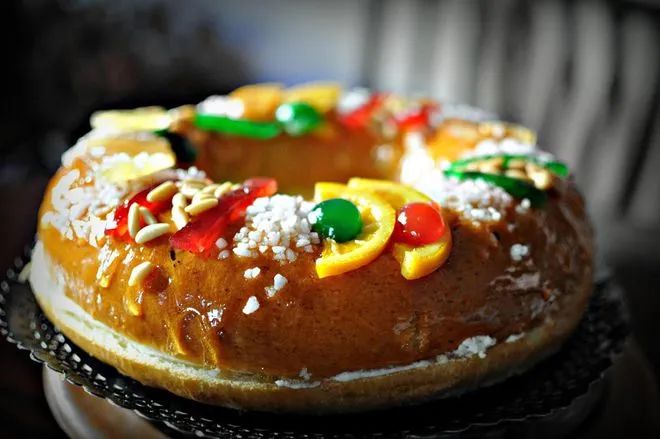Tortilla de patata
Tortilla de patata, or Spanish omelette, is said to have originated in 1817 during a grain shortage. General Tomás de Zumalacárregui, facing food scarcity for his soldiers, is credited with inventing this dish. Its main ingredients include thinly sliced potatoes and eggs, essentially creating a thick potato omelette.

There are variations of the recipe in different regions, including ingredients like sausage, zucchini, bell peppers, or mushrooms. It is typically served in tapas bars, sliced or cut into small portions.
Montaditos
Montaditos are open-faced sandwiches that are an essential snack in Spain. While there are no fixed ingredients, they are always made with slices of bread. The toppings can vary and may include cured meats, sausages, ham, various cheeses, pickles, anchovies, and other types of seafood, offering a wide range of combinations.

Spaniards consider it to be Spain’s first sandwich, dating back to the 15th or 16th century. The name “Montaditos” is believed to come from the word “montar,” meaning to mount or assemble, aptly describing the process of putting together these sandwiches.

Bocadillo de jamón
Bocadillo de jamón is a sandwich made with Spanish bread and slices of Spanish cured ham, such as Serrano ham or Iberian ham. The filling can also include slices of cheese (typically Manchego cheese), tomato, roasted red pepper strips, and pitted black olives.

Flores de hojaldre, translated as “puff pastry flowers,” is a specialty from the Spanish city of El Puerto de Santa María. It is a type of pastry made into flower or rose shapes using puff pastry.

It is known for its light and fluffy texture, often dusted with powdered sugar, and enjoyed with a cup of coffee. Generally, it is sweet, but it can also be made savory.

Churros
Churros are a familiar Spanish pastry, known for their long and crispy fried texture.

It was originally invented by Spanish shepherds and has become popular in Spain and Latin America, often enjoyed as a breakfast treat. They are typically dusted with a generous amount of cinnamon sugar and paired with a cup of strong coffee or hot chocolate.

Roscón de Reyes
Roscón de Reyes is a sweet, ring-shaped bread made from leavened dough and adorned with sugar, candied fruits, or dried fruits on top. Although the cake has its roots in pagan traditions, in modern times, it is closely associated with the Feast of the Epiphany, a Christian holiday celebrated on January 6th that commemorates the visit of the Magi to the infant Jesus.

People believe that the current tradition originated in 14th-century France, spread to Spain, and later made its way to Latin American countries such as Mexico, Argentina, and Uruguay.

Crema Catalana
Crema Catalana is a popular Spanish dessert made with milk, cornstarch, and eggs. After baking in the oven, it is cooled and then sprinkled with sugar on top, which is caramelized until it forms a crispy layer. Sometimes, it is flavored with cinnamon, lemon zest, or orange peel.

It is also known as “Crema de Sant Josep” because it is traditionally prepared on March 19th in celebration of Saint Joseph. It is also one of the oldest egg-milk desserts in Europe, dating back to the 14th century.

Arroz con leche
Arroz con leche is a long-standing dessert with historical ties to the Moors. Today, this rice pudding is popular in Spain, especially in the northern regions, and throughout Latin America. Its key ingredients include rice, milk, sugar, cinnamon sticks, and lemon or orange peel.

Some Arroz con leche is baked in the oven, while others are cooked on the stovetop. It can be served hot or cold, and it’s often recommended to sprinkle cinnamon on top for decoration.
The above are various classic dishes from Spain~
How many of these dishes have you tried? And which ones are you interested in trying?



